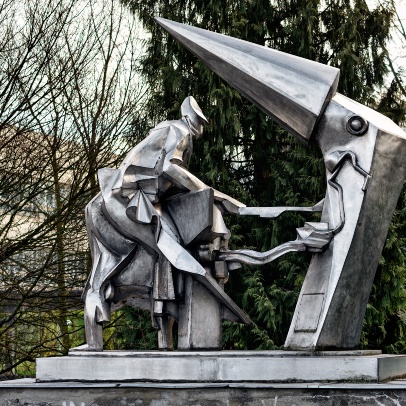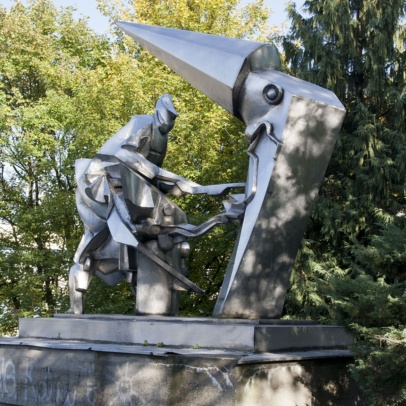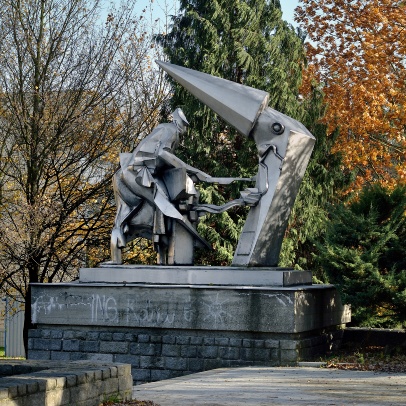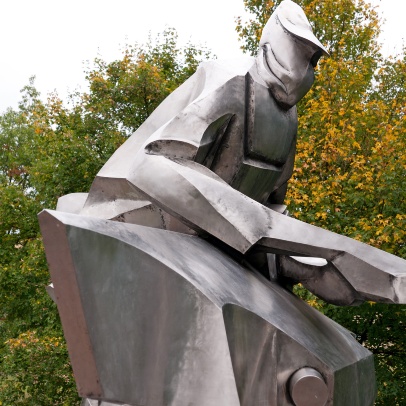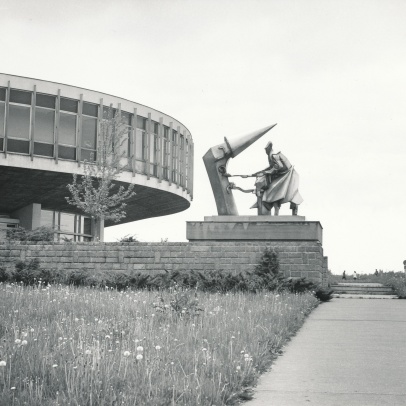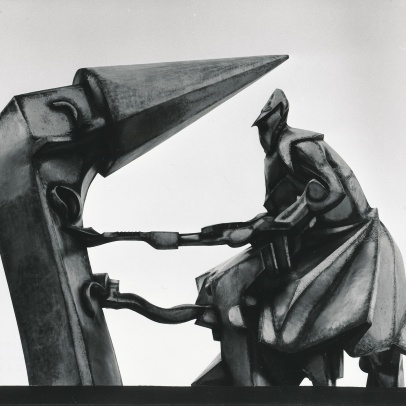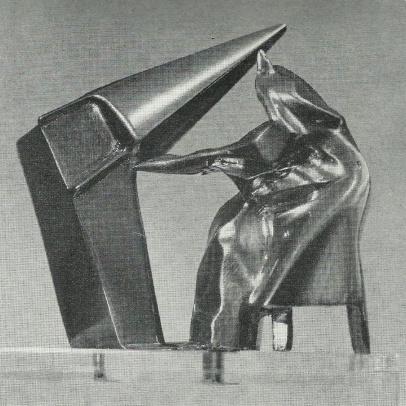Název: Work
Autor: Rudolf Svoboda (architectural cooperation: Zdeněk Strnadel)
Dating: 1973 competition and selection procedure, 1977 final approval, 1978 installation
Location: in the exterior next to the road between the Rectorate building and the circular auditorium on the Poruba campus of VŠB-TUO
Execution: a free-standing sculpture made of stainless steel, 460 cm high, mounted on a concrete base
MAY IT BE SEEN EVEN BY NIGHT!
The almost futuristic figure of the steelworker and experimenter at once shows distinct profiles from all available sides and material treated to achieve high gloss. The steelworker’s hands blend in with the tool touching a surreal object, the conical apex of which is pointing to the sky, turning into a shooting beam.
In the competitive tendering for the second key piece of sculpture in the exterior of VŠB in late 1973, two artists who were not from Ostrava (František Heinz from Uherské Hradiště and Rudolf Svoboda from Prague) participated, in addition to two local sculptors (Václav Uruba and Václav Fidrich). The Work was assigned to R. Svoboda in 1975 (in 1974 he won the national award for outstanding work, which undoubtedly played a role in the assignment of significant societal contracts). After the central Gajda relief Prometheus / Expansion of Science, Technology and Civilization, it was the second major work which was intended to proceed from it ideologically, and describe the mission of the first Technical University in Ostrava, which was also suggested by the original alternative names New Age (this name eventually was held for the Frýdek-Místek sculpture in 1981).
Compared to Gajda’s abstract artwork, Svoboda chose a composition with a well readable figure, “futuristically” moving, whose machine hands morph into with a surreal technical object.
In archival materials, we can even read about a requirement that the work “could also be seen in the dark”. Whether it was the original idea of the author, or the subsequent efforts to meet the recommendations, the material impression in the form of polished metal underlined the form and eventually helped the sculpture to stand out even in a less exposed location beside the circular auditorium. In the final approval of the work, the artistic board appreciated the “educational idea”, because the “mission of the work was expressed at the level of the current trend of scientific and technological development” (1977). It seems that at the time of advanced “era of normalization,” the committee tolerated a form moving away from the descriptive and glorified portrayal of the worker featured almost stereotypically in work-related topics. The Poruba statue may have inspired the creation of several similarly shaped sculptures with figures touching the universe and the achievements of science in different ways (e.g. Return from the Universe from 1979, initially located in Prague, today in Pilsen, or the already mentioned New Age with a flying figure in Frýdek-Místek).
